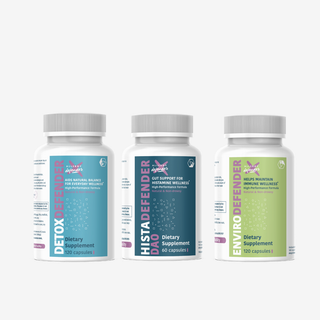TL;DR Magnesium deficiency occurs when your body lacks sufficient magnesium for 300+ (actually it's closer to 700-800 now) biochemical reactions, causing subtle but impactful symptoms: muscle cramps/spasms, fatigue, weakness, nausea, restless legs, mood changes (anxiety, depression), and difficulty swallowing. Adults need 400-420mg daily (men) or 310-320mg (women); pregnant women require 350-360mg. Most US-grown food lacks adequate vitamins/minerals, making supplementation necessary. Options include oral supplements (magnesium citrate/chloride with low absorption) or topical magnesium oil (high absorption rate under 30 minutes through skin). Deficiency links to asthma, hypertension, osteoporosis, and migraines. Consult healthcare professionals before starting supplements.
Key Takeaways:
- Seven key deficiency symptoms – muscle cramps/spasms (especially legs), fatigue and weakness, nausea/vomiting, restless legs with tingling/crawling sensations, mood swings/anxiety/depression, difficulty swallowing
- Daily magnesium requirements – adult men 400-420mg, adult women 310-320mg, pregnant women 350-360mg (U.S. Department of Health and Human Services recommendations; alternative practitioners may suggest higher)
- Food sources insufficient – most US-grown food is deficient in vitamins/minerals despite magnesium-rich options (leafy greens, nuts, seeds, whole grains, fatty fish); supplementation is typically necessary
- Topical absorption superior – magnesium oil spray absorbs through skin with a high absorption rate under 30 minutes; apply after showering to areas prone to cramps (legs, shoulders) or under arms (for some, it works well as deodorant)
- Oral supplements have limitations – magnesium citrate and magnesium chloride are commonly used but have low absorption rates; consult a healthcare professional before starting, especially with existing conditions or medications
- Health conditions linked to deficiency – asthma (airway constriction), hypertension (elevated blood pressure), osteoporosis (bone health deterioration), migraines (increased frequency/severity); magnesium regulates calcium/potassium balance for nerve/bone/muscle/heart function
Recognizing the Signs of Magnesium Deficiency
In our fast-paced world, we often overlook the essential nutrients our bodies need to function optimally. One such vital nutrient is magnesium, a powerhouse that supports numerous bodily functions, including muscle and nerve function, blood sugar control, and bone health. Understanding magnesium deficiency and recognizing its signs is pretty darned important, especially for individuals dealing with chronic health issues like asthma and allergies.
What is Magnesium Deficiency?
Magnesium deficiency occurs when your body doesn’t get enough magnesium to perform its numerous functions. This can lead to a range of health issues, as magnesium is involved in over 300 (actually, it's closer to 700-800 now) biochemical reactions in the body. It's a common problem that can often go unnoticed due to its subtle symptoms.
Common Symptoms of Magnesium Deficiency
Recognizing magnesium deficiency signs is the first step toward addressing the problem. Here are some common symptoms to watch out for:
- Muscle Cramps and Spasms: Magnesium plays a vital role in muscle relaxation. A deficiency can lead to painful cramps and spasms, often experienced in the legs. When I experience spasms, I immediately spray on magnesium oil. Works wonders!
- Fatigue and Weakness: A lack of magnesium can result in decreased energy levels, making you feel tired and weak.
- Nausea and Vomiting: These symptoms can be early signs of a magnesium deficiency, although they can also indicate other health conditions.
- Restless Legs: A tingling or crawling sensation in the legs, especially at night, can be a symptom of magnesium deficiency.
- Mood Changes: Low magnesium levels can lead to mood swings, anxiety, and even depression.
- Difficulty swallowing: I experience this when eating. If it feels like food is caught in my throat, and I need to swallow water to get rid of the feeling, I know I need to boost my magnesium levels.
How Much Magnesium Do You Need?
The recommended daily amount of magnesium varies by age and gender. For adult men, it's about 400-420 mg per day, while adult women need around 310-320 mg. Pregnant women require a bit more, approximately 350-360 mg daily. These amounts are recommended by the U.S. Department of Health and Human Services. Alternative health care practitioners might recommend higher amounts.
Sources of Magnesium?
Magnesium is found in a variety of foods, and while you may think this will make it easier to meet your daily requirements, think again. Most food grown in the US is deficient in vitamins and minerals. So, supplementation is necessary. But, here's a go at some magnesium-rich foods:
- Leafy Greens: Spinach, kale, and Swiss chard are excellent sources.
- Nuts and Seeds: Almonds, cashews, and pumpkin seeds are packed with magnesium.
- Whole Grains: Foods like brown rice and quinoa contain significant amounts of magnesium.
- Fish: Fatty fish such as salmon and mackerel are also great sources.
Magnesium Supplements
If you're unable to get enough magnesium from your diet (which is hard), supplements can be a helpful alternative. Oral magnesium supplements, such as magnesium citrate or magnesium chloride, are commonly used but have a low absorption rate.
However, it's essential to consult with a healthcare professional before starting any supplements, especially if you have existing health conditions or are taking other medications.
Topical Magnesium Oil
Another option for boosting magnesium levels is using topical magnesium oil. Transdermal magnesium application allows magnesium to be absorbed through the skin, potentially reducing muscle cramps and improving overall magnesium levels. High absorption rate in under 30 minutes.
How to Use Magnesium Oil Spray
Magnesium oil spray is easy to use. Simply spray it onto your skin, preferably after a shower, and gently massage it in. It can be applied to areas prone to cramps or discomfort, such as the legs or shoulders. I tend to use it under my arms. Works extremely well as a deodorant!
Magnesium’s Role in Overall Health
Maintaining the right balance of magnesium, calcium, and potassium is crucial for good health. Magnesium helps regulate calcium levels in the body, ensuring proper nerve function and bone health. It also aids in the balance of potassium levels, which is essential for muscle and heart function.
Health Conditions Linked to Magnesium Deficiency
Magnesium deficiency has been linked to various health conditions, some of which include:
- Asthma: Low magnesium levels can contribute to constriction of the airways, worsening asthma symptoms.
- Hypertension: Magnesium helps regulate blood pressure, and a deficiency can lead to elevated levels.
- Osteoporosis: Adequate magnesium levels are essential for bone health, and a deficiency can increase the risk of osteoporosis.
- Migraines: Studies suggest that magnesium deficiency may play a role in the frequency and severity of migraines.
As someone who understands the struggles of managing asthma and allergies, I hope this information empowers you to take control of your health. Remember, consulting with a healthcare professional is always a good step when considering changes to your supplement routine.
Your journey to better health starts with understanding and addressing the signs of magnesium deficiency. Let’s work towards a healthier, symptom-free life together.
Always talk to your doctor before starting or stopping any supplements.


















